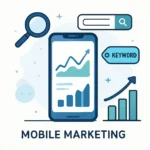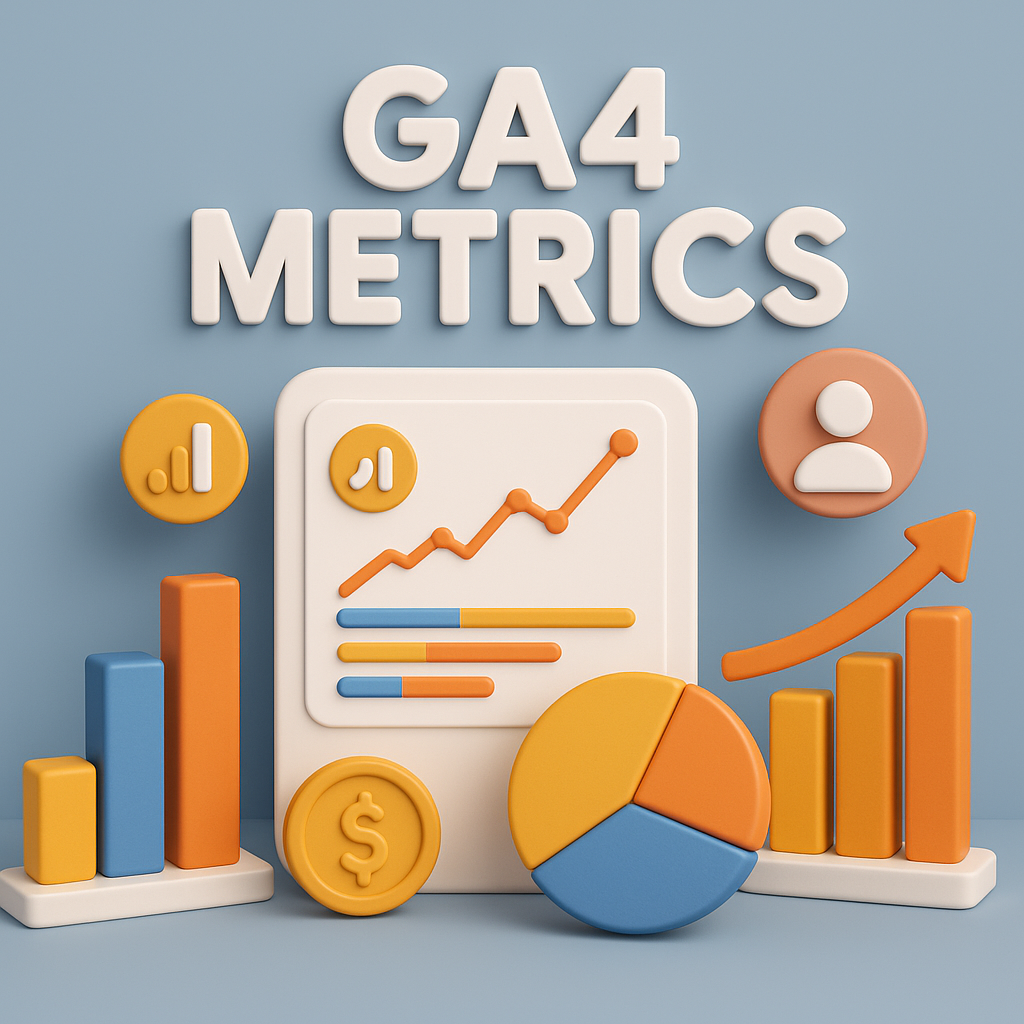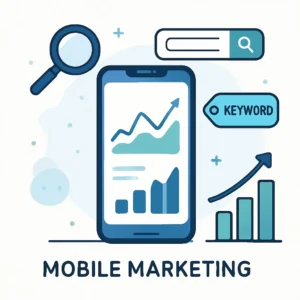

Generative Engine Optimization
Generative Engine Optimization (GEO) has emerged as a groundbreaking concept that is reshaping how businesses approach search engine optimization (SEO). By integrating advanced AI technologies, such as natural language processing (NLP) and generative models, GEO offers innovative solutions to improve online visibility, engagement, and conversions.
Table of Contents
ToggleWhat is Generative Engine Optimization?
Generative Engine Optimization refers to the process of optimizing digital content using generative AI models to enhance its relevance, quality, and ranking on search engines. Unlike traditional SEO, which primarily focuses on keywords and backlinks, GEO leverages AI to create, analyze, and optimize content dynamically.
By incorporating technologies like Generative AI SEO, businesses can automate content creation, predict user intent, and provide personalized experiences. These capabilities not only streamline SEO processes but also ensure that content aligns with evolving search engine algorithms.
Key Components of Generative SEO
Generative AI SEO Tools Tools powered by generative AI, such as ChatGPT and Jasper, are transforming how marketers approach content creation and optimization. These tools can generate high-quality content tailored to specific keywords and user intents, such as How to optimize generative AI models or Tools for generative engine optimization.
Content Optimization AI-driven Content Optimization ensures that the generated content is relevant, engaging, and aligned with search engine requirements. By analyzing user behavior and search patterns, GEO tools can optimize content for both search engines and readers.
AI Optimization AI Optimization plays a critical role in fine-tuning generative models to deliver accurate and impactful content. Techniques like reinforcement learning and deep learning help improve the performance of these models, ensuring that they meet specific SEO objectives.
Generative Search Optimization This involves using generative AI to enhance search engine strategies. By predicting user queries and generating content that directly addresses those queries, businesses can improve their search engine rankings and attract more organic traffic.
Benefits of Generative Engine Optimization
Enhanced Efficiency
Generative models can produce large volumes of content quickly and efficiently. This reduces the time and effort required for manual content creation, enabling marketers to focus on strategy and analysis.Improved Content Quality
By leveraging AI-Driven Content Optimization, GEO ensures that the content is not only high-quality but also contextually relevant. This enhances user engagement and boosts conversion rates.Personalization at Scale
Generative AI enables businesses to create personalized content for diverse audience segments. For instance, GEO can generate tailored responses for different customer intents, such as queries related to Engine Optimization Techniques.Adaptability to Algorithm Changes
Search engine algorithms are constantly evolving. GEO helps businesses stay ahead by adapting to these changes and ensuring that their content remains competitive.
Tools for Generative Engine Optimization (GEO)
Generative Engine Optimization (GEO) relies heavily on advanced tools that enable content creation, optimization, and analysis using AI technologies. These tools help businesses stay competitive by enhancing efficiency and aligning content with search engine algorithms. Below are some of the most effective tools for implementing GEO strategies
1. ChatGPT
- Purpose: AI-driven content creation.
- Features:
- Generates high-quality text based on specific keywords or topics.
- Offers suggestions for structuring and optimizing content.
- Can assist in generating FAQs, blog posts, and product descriptions tailored for SEO.
- Use Case: Creating keyword-focused content like articles on Generative AI SEO or How to optimize generative AI models.
2. Jasper AI (formerly Jarvis)
- Purpose: AI-powered copywriting and SEO optimization.
- Features:
- Creates engaging, SEO-friendly content quickly.
- Integrates with tools like Surfer SEO for enhanced optimization.
- Includes templates for blogs, ads, and website copy.
- Use Case: Generating optimized content around keywords like Generative Search Optimization or AI-Driven Content Optimization.
3. Surfer SEO
- Purpose: Content optimization for search engine rankings.
- Features:
- Analyzes top-ranking pages for your target keywords.
- Provides actionable recommendations for improving content structure, keyword density, and readability.
- Integrates with AI writing tools to streamline content optimization.
- Use Case: Optimizing existing content for keywords like Engine Optimization Techniques or Generative SEO.
4. Semrush
- Purpose: Comprehensive SEO and keyword research.
- Features:
- Provides detailed keyword analytics, including search volume and competition.
- Tracks keyword performance over time.
- Suggests related keywords and content ideas based on user intent.
- Use Case: Identifying high-value keywords like Tools for generative engine optimization and integrating them into content strategies.
5. Writesonic
- Purpose: AI content generation tailored for SEO.
- Features:
- Supports long-form and short-form content creation.
- Includes an SEO optimizer that aligns content with target keywords.
- Generates meta descriptions, headlines, and blog outlines.
- Use Case: Crafting detailed articles and long-tail keyword content, such as Best practices for generative engine optimization.
6. MarketMuse
- Purpose: Content strategy and optimization powered by AI.
- Features:
- Analyzes content gaps and provides suggestions for improvement.
- Offers topic modeling to identify relevant subtopics and questions.
- Predicts content performance based on SEO metrics.
- Use Case: Enhancing content depth and relevance for keywords like Understanding generative engine optimization.
7. Grammarly
- Purpose: Writing assistance and clarity improvement.
- Features:
- Ensures grammatical accuracy and readability.
- Includes a tone detector to align content with target audiences.
- Offers SEO-friendly writing suggestions.
- Use Case: Polishing content to ensure it aligns with the professional tone required for GEO topics.
8. Clearscope
- Purpose: Content optimization for search intent.
- Features:
- Analyzes top-performing pages for a target keyword.
- Suggests relevant terms and phrases to include.
- Provides content grade scores based on keyword usage.
- Use Case: Refining content around highly specific keywords like AI Optimization or Generative SEO.
9. Ahrefs
- Purpose: Backlink analysis and keyword research.
- Features:
- Identifies backlink opportunities to boost domain authority.
- Provides detailed reports on keyword rankings and competitor analysis.
- Suggests content topics based on search trends.
- Use Case: Enhancing the SEO impact of articles focused on Generative Engine Optimization.
10. WordTune
- Purpose: Writing assistant for clarity and style.
- Features:
- Rewrites and refines sentences for better readability.
- Adapts writing tone based on the audience.
- Helps maintain SEO-friendliness while improving content flow.
- Use Case: Rewriting and optimizing content for keywords like Content Optimization and AI-Driven Content Optimization.
Practical Applications of GEO
Content Creation Generative AI can produce blog posts, articles, and social media content optimized for specific keywords like Generative SEO and Generative AI SEO. This content is not only SEO-friendly but also engaging and informative.
Keyword Optimization GEO tools analyze search trends and suggest high-performing keywords. For example, terms like Tools for generative engine optimization and How to optimize generative AI models can be seamlessly integrated into the content.
Search Engine Optimization By implementing Generative Search Optimization techniques, businesses can improve their search engine rankings. This includes creating content that directly answers user queries and optimizing metadata.
Performance Analysis GEO tools provide insights into content performance, helping marketers identify areas for improvement. This includes analyzing metrics such as click-through rates, bounce rates, and conversions.
Challenges and Solutions
While GEO offers numerous benefits, it also comes with challenges:
Complexity of Implementation Implementing GEO requires expertise in AI technologies and SEO. Businesses can overcome this by investing in training or partnering with experienced professionals.
Cost of Tools and Resources Generative AI tools can be expensive. To mitigate costs, businesses can start with affordable tools and scale up as needed.
Ethical Considerations The use of AI-generated content raises ethical concerns, such as transparency and authenticity. Businesses must ensure that their content adheres to ethical guidelines and provides genuine value to users.
Future of Generative Engine Optimization
The future of GEO is promising, with advancements in AI and machine learning paving the way for more sophisticated solutions. As search engines continue to prioritize user experience, businesses must adopt GEO to remain competitive.
Emerging trends in GEO include:
Voice Search Optimization With the rise of voice assistants, GEO tools are focusing on optimizing content for voice search queries.
Visual Content Generation Generative AI is expanding into visual content, enabling businesses to create images, videos, and infographics optimized for SEO.
Real-Time Personalization AI-driven personalization will enable businesses to deliver real-time, contextually relevant content to users.
Conclusion
Generative Engine Optimization represents a significant leap forward in digital marketing. By integrating AI technologies, businesses can enhance their SEO strategies, improve content quality, and deliver personalized experiences. As the digital landscape continues to evolve, adopting GEO will be essential for businesses looking to stay ahead of the competition.
Whether you’re exploring Engine Optimization Techniques, searching for the best Tools for generative engine optimization, or seeking to understand Generative AI SEO, GEO offers a comprehensive solution to meet your needs. Embrace this innovative approach and unlock new opportunities in the world of digital marketing.
Related Posts
tlovertonet
My coder is trying to convince me to move to .net from PHP. I have always disliked the idea because of the expenses. But he’s tryiong none the less. I’ve been using WordPress on several websites for about a year and am concerned about switching to another platform. I have heard good things about blogengine.net. Is there a way I can import all my wordpress content into it? Any kind of help would be really appreciated!
varundeep2023@gmail.com
Switching from WordPress to another platform like BlogEngine.NET can be a significant decision, especially when it involves importing your existing content. Here’s a structured answer to help guide you through the process of moving from WordPress to BlogEngine.NET, as well as addressing your concerns about the potential costs and advantages.
1. Understanding the Concerns:
Cost Considerations: Moving to .NET could involve increased costs, especially for hosting, licenses, or development. However, it’s important to weigh the costs against the potential benefits, such as better performance, security, or integration with .NET-based systems.
Comfort with WordPress: You’re already familiar with WordPress, and it’s a powerful, widely used platform with tons of plugins and support. Moving to a new platform like BlogEngine.NET could come with a learning curve and require some adaptation, so your concerns are valid.
2. About BlogEngine.NET:
What is BlogEngine.NET?: BlogEngine.NET is a lightweight, open-source blogging platform built on .NET, which is easy to use and can run on IIS (Internet Information Services) web servers.
Advantages of BlogEngine.NET:
It’s built on the .NET framework, which could make integration with other .NET applications easier.
It provides good flexibility for developers familiar with .NET technologies.
It has a built-in support system for blogs and provides an excellent performance boost for some users compared to WordPress, particularly on Windows-based servers.
3. Importing WordPress Content into BlogEngine.NET:
The process of migrating content from WordPress to BlogEngine.NET is not as straightforward as exporting and importing because BlogEngine.NET doesn’t have a built-in WordPress importer like some other CMS platforms (e.g., Joomla, Drupal). However, here’s how you can approach it:
Steps to Import WordPress Content:
Option 1: Use RSS Feed Export
WordPress: You can export your content from WordPress using the built-in RSS export feature (XML file).
BlogEngine.NET: After exporting the RSS feed from WordPress, you’ll need to write a custom script or use third-party tools to parse this XML data and migrate it into BlogEngine.NET’s format. This will involve transferring your posts, categories, tags, and media (images/files) into the new system.
Tools or Scripts: You may need to hire a developer or look for an existing tool that facilitates this migration.
Option 2: Manual Content Transfer
If automatic migration isn’t feasible or too complicated, you could manually transfer your posts.
This would involve copying and pasting the content, images, and media into BlogEngine.NET, which is labor-intensive but often the most reliable option.
BlogEngine.NET allows you to create new blog posts easily via its admin interface, so you could manually copy over the articles.
Option 3: Custom Migration Script (Advanced Option)
If you’re tech-savvy or have access to a developer, you could write a custom migration script in .NET that reads the WordPress database or XML export and imports it directly into BlogEngine.NET’s database.
This method would require a good understanding of both platforms’ database structures and may need some time to set up.
4. Challenges in Switching:
Plugin and Theme Compatibility: Unlike WordPress, BlogEngine.NET has a smaller ecosystem of plugins and themes. This could be a downside if you rely heavily on WordPress plugins for advanced functionality.
Learning Curve: Since you’ve been using WordPress for a while, you and your team might face a learning curve with BlogEngine.NET. However, if you are familiar with .NET technologies, this may be less of an issue.
Performance and Scalability: BlogEngine.NET might offer better performance on a .NET-based infrastructure (especially if you’re already using Windows Server). However, for WordPress sites, there are ways to optimize performance that might close the gap between the two platforms.
5. Alternative Consideration:
Hybrid Approach: If you like BlogEngine.NET’s capabilities but are still attached to the WordPress ecosystem, consider keeping certain parts of your website in WordPress (like your blog) while moving other sections (like a custom-built .NET app) to BlogEngine.NET.
Migrating Gradually: If a full migration feels overwhelming, consider moving part of your content over in phases to lessen the impact on your current website.
6. Conclusion:
Is it Worth It?: Moving from WordPress to BlogEngine.NET is a considerable shift. If you have strong ties to the .NET ecosystem, BlogEngine.NET might offer advantages in performance, customization, and integration with other .NET-based applications. However, if you are concerned about the expense and the learning curve, sticking with WordPress might be a more cost-effective option for now.
Migration Process: While importing WordPress content into BlogEngine.NET isn’t a simple one-click solution, it’s possible with the right approach—either using RSS exports, a custom script, or manually transferring content.
Buy Private Proxies
Good way of explaining, and nice post to take data concerning my presentation subject, which i am
going to present in college.
https://seobests.com
When someone writes an post he/she keeps the plan of a user in his/her mind that how a user can be
aware of it. Thus that’s why this paragraph is amazing.
Thanks!
Best Backlinks SEO
Good day! I simply want to offer you a big thumbs up for
your great information you’ve got right here on this post.
I will be returning to your site for more soon.
Best Backlinks
It’s really a great and helpful piece of info.
I’m satisfied that you shared this useful info
with us. Please keep us informed like this. Thank you
for sharing.
Buy Backlinks SEO
Its such as you read my mind! You seem to grasp so much approximately
this, such as you wrote the ebook in it or something.
I believe that you simply can do with some p.c. to drive
the message house a little bit, but instead of
that, that is magnificent blog. A great read.
I will certainly be back.
SEO Backlink Service
Howdy very cool site!! Man .. Beautiful .. Superb .. I will bookmark your web site and take the feeds also?
I am satisfied to seek out so many useful info right herre in the put up, we’d like work out
more techniques in this regard, thanks for sharing. . .
. . .
Cheap seo Services
Have you ever thought about creating an e-book or guest
authoring on other sites? I have a blog based oon the same subjects you
discuss and would love to have you share some
stories/information. I know my visitors would appreciate
your work. If you’re even remotely interested,
feel free to shoot me an e mail.
https://seobests.com/
When someone writes an article he/she keeps the thought of
a user in his/her brain that how a user can understand it.
Therefore that’s why this post is perfect. Thanks!
Best SEO Backlinks
Your style is so unique compared to other folks
I’ve read stuff from. Thanks for posting when you’ve got the opportunity, Guess
I’ll just book mark this page.
Buy Best SEO Backlinks
It’s fantastic that you are getting ideas from this piece of writing as well as from our dialogue made at this
place.
seobests.com
I’m really inspired with your writing talents and also with the layout in your blog.
Is this a paid theme or did you customize it your
self? Either way stay up the nice quality writing, it is rare to look a great blog
like this one nowadays..
Best SEO Backlink Service
Very rapidly this web page will be famous amid all blog visitors,
due to it’s fastidious articles
buy backlink packages growmatic
I have been browsing on-line more than three hours lately, but I never found any
interesting article like yours. It is beautiful value enough for me.
In my opinion, if all site owners and bloggers made good
content as you did, the internet will be much more helpful than ever before.






















26 comments